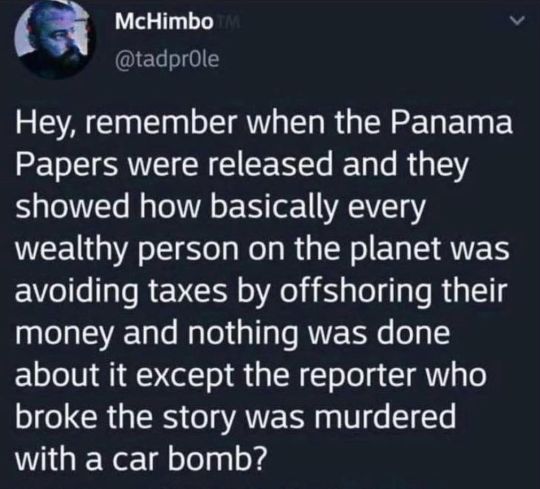58 year old student completing PhDI don't care what pronoun you use for me, I've been called them all over the past 40 odd years as I changed my presentationlesson: nothing is staticrecognizing a plurality of knowledge systems
Don't wanna be here? Send us removal request.
Text
Help Granny Finish her PhD !
Help me curate this blog for a few months!
Submit your contributions here
Now that I am on the Dean's payroll to finish writing my thesis I can't put it off anymore and have to dive into this work. My deadline for submitting my PhD dissertation is November 2025. I'm not going to be able to keep surfing for content as regularly as I do - your contributions will help us keep the blog/s alive while I disappear into the writing cave.

10 notes
·
View notes
Text
Harnessing the Sun Transforms Camel Herders Livelihoods
For many years, farmer Sree Ram Raika lived on an income as low as ₹10,000 (~$119.12) per month until he discovered a new way of life. He now earns more than four times his previous income by selling chilled camel milk using solar energy. The chillers can cool up to 500 liters of milk every day. Today, more than 200 farmers are using solar-powered chillers
“I can now provide high-quality camel milk with solar-powered instant milk chillers. This sustained income gives me hope that future generations will continue our tradition of camel rearing.”

The 100% solar chillers generate 3 kW per chiller. “We have four chillers installed in different areas. We have about 200 farmers collaborating with us,” said Ojha.
Discussing how the technology works, Akshatha says, “Once the milk is poured from the inlet at the top of the chiller, it instantly chills the milk to below 7 degrees Celsius, and the farmer can collect it immediately through the outlet.”

The community of farmers, along with SELCO, looks after the upkeep of the chillers. The solar chillers are connected to a cloud, and any discrepancy can be fixed remotely. The machine also has a regular cleaning mechanism. During the installation, the farmer is trained to use the technology and its operation and maintenance.”
20 notes
·
View notes
Text

Marketing PR maybe but addresses a topic I haven't seen elsewhere yet
4 notes
·
View notes
Text

Why Solar-Powered Cold Storage is the Future of Fruits and Vegetables
There are different types of solar energy for agriculture solutions available today. Some popular ones include:
Solar cold storage system – Stores perishable goods like fruits, vegetables, and dairy products.
Solar-powered irrigation systems – Pumps water for irrigation using solar energy.
Solar dryers – Helps in drying grains, spices, and fruits efficiently.
Solar-powered milk chillers – Keeps dairy products fresh, preventing spoilage.
These renewable energy for agriculture solutions are transforming farming by reducing costs and increasing productivity.
16 notes
·
View notes
Text
The historical stepped village of Palangan in Iran’s Kordestan province was introduced as a successful example of sustainable tourism that preserves local culture and heritage
Fatemi emphasized the important role that tourism-focused villages play in advancing sustainable development goals, describing Palangan as a leading example of Iran's efforts to balance tourism growth with environmental conservation and the strengthening of indigenous cultural identities.
youtube
#solarpunk#solar punk#community#indigenous knowledge#indigenous#indigenous peoples#iran#palangan#Youtube
16 notes
·
View notes
Text
Its very old, it might have problems, but I loved the series

A spaceship that loves you
6K notes
·
View notes
Text
Ugandan entrepreneurs Sandra Namboozo (26) and Samuel Muyita (28) have scooped both the People’s Choice and Community Healers awards at the prestigious 2025 Young Inventors Prize, organised by the European Patent Office (EPO). The duo was recognised for their groundbreaking innovation, Karpolax—a biodegradable sachet that preserves fruit freshness without refrigeration. The invention impressed both the public and an independent jury. The sachet, placed inside fruit packaging, emits a blend of plant-based volatile organic compounds derived from cloves, lemongrass, eucalyptus, and wintergreen. These compounds suppress ethylene emissions to slow ripening and protect against mould, fungi, and bacteria.

In pilot trials conducted with the National Agricultural Research Organisation (NARO), Karpolax extended the shelf life of mangoes from 11 to 33 days. The technology has also been tested successfully on bananas, apples, and oranges.
The innovation offers a critical solution for smallholder farmers in sub-Saharan Africa, where cold storage facilities are often unavailable or unaffordable.
Since its launch in 2020, Karpolax has supported over 100 farmers, 20 exporters, and 250 vendors, helping prevent the spoilage of more than one million tonnes of fruit. The sachets are now being adapted for use with pineapples, capsicum, and berries.
“One sachet can preserve a five-kilogram box of fruit for up to 30 days, after which its active ingredients are used up,” Namboozo explained.
1K notes
·
View notes
Text
In 2025, Brazil will host two of the most consequential global gatherings in the fight against climate change: the 30th Conference of the Parties (COP30) to the United Nations Framework Convention on Climate Change (UNFCCC) and the 17th BRICS Summit. While the significance of COP30 is self-evident, the importance of the BRICS meeting should not be underestimated. The bloc is undergoing a notable “greening” process, marked by increasing strategic alignment on climate issues. This convergence is expected to shape — and potentially influence — the dynamics of the November negotiations at COP30. Expectations are high that the BRICS meetings in Brazil will deliver substantive outcomes and that COP30 will stand firm amid growing turbulence driven by intensifying unilateral foreign policies.
The aim of this article is to examine the recent trend toward the “greening” of the BRICS bloc, particularly in light of the latest joint declaration issued by the environment ministers of its member states. This emerging environmental agenda signals a potential pivot in the group’s identity—from an economic and geopolitical counterweight to a more proactive actor in global sustainability governance. In this context, the essay explores the bloc’s capacity to confront pressing environmental and climate-related challenges while also scrutinizing the internal asymmetries and political frictions that may hinder the consolidation of a coherent and influential BRICS position on global environmental issues.
In an era of escalating climate challenges and changing geopolitical landscapes, emerging economies have been playing a critical role in global climate governance. Among these, the BRICS group—Brazil, Russia, India, China, and South Africa—has emerged as a vital player. With more than 35 percent of the global economy and over 45 percent of the world’s population, BRICS wields considerable influence in determining sustainable development pathways. The bloc has consistently advocated for balanced green growth policies rooted in the principle of Common But Differentiated Responsibilities (CBDR), which recognises that while all nations share responsibility for climate action, their obligations vary based on historical emissions and capabilities. This principle has since evolved into CBDR-RC (Common But Differentiated Responsibilities and Respective Capabilities), which also accounts for countries’ present capacities to respond to climate challenges.
#solarpunk#solar punk#solarpunk futures#BRICS#brazil#russia#india#china#south africa#global south#sustainability#environment#climate change
13 notes
·
View notes
Text

are you ever scrolling through tumblr and you have a thought and immediately lose it so you have to scroll back up to give your brain the conditions under which it originally created the thought so you can bring it back
241K notes
·
View notes
Text
Vegan biodegradable detergent invented in China
Researchers funded by China’s Key Technologies R&D Program—under the country’s Ministry of Science and Technology—have created a sustainable plant-based detergent made of tiny wood fibers and corn protein that removes stains on clothes and dishes just as well as regular commercial products available in the market.
The environmentally compatible vegan detergent developed by the research team led by Pengtao Liu comprises ingredients derived from abundant renewable sources.
By blending cellulose nanofibers from wood with zein protein from corn, the scientists developed an emulsion. Cellulose’s ability to both attract and repel water makes it effective at forming emulsions and capturing different types of stains, while zein protein stabilizes the mixture and traps oils.

Liu and colleagues then evaluated the cleaning effectiveness of the cellulose/zein detergent on cotton fabrics and dishes stained with ink, chili oil, and tomato paste. They compared its performance against laundry powder and commercial dish soap solutions using deionized water.
Growing public awareness of the environmental impact of household products, which contain ingredients like alkylphenol polyethoxylates and phosphates, has driven interest in replacing traditional cleaners with natural alternatives. The latest invention is being seen as part of this movement.
50 notes
·
View notes
Text
27K notes
·
View notes
Text
Geographer Ndidzulafhi Innocent Sinthumule has explored the potential for sacred natural sites in South Africa to contribute to nature conservation.
There are areas in South Africa known as sacred sites because of their cultural, spiritual, or historical value, often linked to ancestral beings, religion and traditional beliefs.
They are often places of reverence, where rituals, ceremonies, burials, or pilgrimage are conducted, and where the custodians of the areas feel a deep connection to something larger than themselves.
Examples of sacred natural sites include these in Limpopo province, in the north of the country:
Thathe holy forest
the sacred forest of Vhutanda
the Phiphidi waterfall
the Fundudzi lake.
In the province of KwaZulu-Natal, there are Mazizini and Mabasa forests, regarded as sacred by local communities.
In the Free State province, the local Basotho people regard certain caves as sacred and ancestral sites:
Motouleng (between Fouriesburg and Clarens)
Mautse (between Rosendal and Ficksburg)
Mantsopa (at Modderpoort near Ladybrand)
Badimong near Rosendal.
How do the sites fit in with protecting diversity?
The study aimed to assess opinions and perceptions about the opportunities and challenges of sacred natural sites in contributing to global conservation goals. I interviewed academics involved in research on Indigenous knowledge, people involved in discussions about conservation, and custodians of sacred natural sites – 39 people in all. Study participants identified a number of opportunities. They said:
Sacred natural sites frequently harbour high levels of biodiversity, including rare and endemic species, because they have been protected for a long time through cultural practices. Giving them more legal protection and funding, and integrating them into national conservation strategies, would protect hotspots of biological diversity.
Integrating traditional ecological knowledge and practices into mainstream conservation efforts would promote more inclusive and culturally sensitive approaches to environmental management.
It would expand the total land area under conservation.
It might create conservation corridors that would facilitate movement of animals and ecological processes between isolated habitat patches.
Sacred natural sites could serve as carbon sinks or storehouses of carbon emissions. Sacred forests have old, tall trees and well developed canopy – the layer of foliage that forms the crown of a forest.
They can serve as tourist destinations where visitors will learn about biodiversity and about religious and cultural practices.
#solarpunk#solar punk#indigenous knowledge#africa#sacred sites#biodiversity#nature#conservation#protection#south africa#long read
10 notes
·
View notes
Text

BRICS countries lead the world's solar power revolution
“BRICS countries are no longer on the sidelines of the clean energy transition – they are driving it,” notes Muyi Yang, Senior Electricity Analyst at Ember. “The bloc has the momentum and the opportunity to lead with greater ambition while strengthening energy security and reducing reliance on fossil fuel imports.”
China remains the growth driver. In 2024, China accounted for 39% of global solar energy production (in 2014, this figure was no more than 12%). Among other BRICS countries, impressive growth rates have been achieved over the past 10 years by India (6.3% of global solar power generation vs 2.5% in 2014) and Brazil (3.5% in 2024 vs 0.01% ten years earlier). These three countries are among the top 5 largest global solar generators with 834 TWh, 133 TWh and 75 TWh solar module output in 2024, respectively.
Further, the current expanded top 20 global ranking includes South Africa and UAE: these countries accounted for approximately 0.9% of global solar energy production in 2024 (20 TWh and 15.2 TWh, respectively).
#solarpunk#solar punk#renewable energy#solar power#growth#transition#BRICS#Brazil#India#Russia#China#South Africa#global south#emerging markets
12 notes
·
View notes


